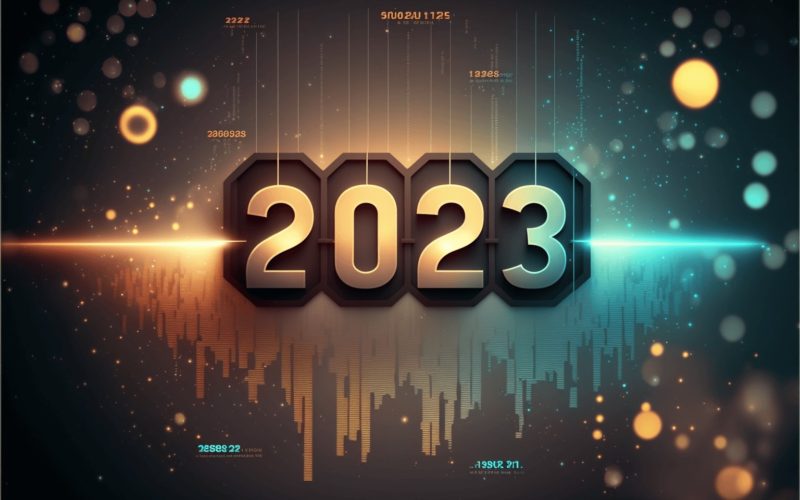Ecommerce trends 2023 : Top 10
It is now common knowledge that the ecommerce industry has been on an upward trend over the past two years. COVID-19 has forever changed the way we do business, leading to an acceleration of online business transactions. The global ecommerce market was estimated at $ 5.7 million in 2022. This figure, as well as other key statistics, is expected to rise further in 2023. Will there be a better time to invest in ecommerce? Possibly not. For instance, ecommerce is expected to account for 20.8% of global retail sales by 2023. However, companies need to have in-depth knowledge of the defining ecommerce trends for 2023 to take full advantage of this huge industry.
WHAT ARE THE FACTORS AFFECTING ECOMMERCE TRENDS FOR 2023?
Technology is one of the key factors driving ecommerce trends for 2023. There seems to be an innovation every day. Consequently, there are more exciting ways for businesses and customers to interact. Changes in consumer behavior also have a major impact on the rising trends. For example, today's customers have a higher demand for personalization and same-day delivery. That's why companies are constantly looking for new ways to meet customer demands to avoid customer churn.
In addition, stricter data privacy rules play an important role in the evolving ecommerce trends for 2023. Collecting and using data from prospects and customers is key to service delivery. But with GDPR and CCPA enforcing new laws and the depreciation of third-party cookies looming, companies must find new ways to collect data. The global economy is also a problem, with global inflation rates putting financial pressure on all parties.
WHAT ARE THE TOP ECOMMERCE TRENDS FOR 2023?
Businesses – no matter their size – need to stay current in order to scale, stay ahead of the competition and keep customers happy. Here are the key ecommerce trends for 2023 to look forward to in the new fiscal year:
SOCIAL MEDIA TRADE IS GETTING TOO BIG TO IGNORE
In 2022, social media revenue is estimated at $ 992 billion. This proves the value of social media platforms as commercial tools. Recently, TikTok has been emerging to join Facebook and Instagram as viable social commerce platforms. The surfing and shopping habits of Gen Z and younger Millennials are a huge influence on this growing trend. As a result, companies need to position themselves on key social media channels as they start the new fiscal year to capture this vital demographic and expand sales opportunities.
OMNICHANNEL EXPERIENCE IS A MUST
For years, the emphasis has been on developing a multichannel approach to sales and customer service. However, the 2023 ecommerce trends dictate the need to upgrade from a multichannel to an omnichannel approach. With omnichannel marketing, the customer journey is seamless and smooth across all touchpoints. Therefore, almost 80% of customers prefer brands with a omnichannel marketing strategy. That's why 2023 is no longer just about expanding into new marketing channels. The focus is now on integrating web, social media and email marketing channels to provide customers with a unified experience.
MOBILE SHOPPING IS STARTING TO DOMINATE
The desire for convenience is driving customer shopping decisions that will impact ecommerce trends for 2023. The ability to discover products and make payments from a mobile phone is perhaps the pinnacle of convenience. Currently, 59.5% of all website traffic comes from mobile devices. Hence, a significant portion of global ecommerce activity is conducted via mobile. By 2025, we expect mobile store sales to exceed $ 710 billion. That's why companies need to respond by optimizing their websites for mobile traffic now. Investing in native and progressive web apps can also potentially differentiate the company from competitors. Finally, by 2023, companies must provide support for mobile payment options.
CONTEXTUAL TARGETING AND ZERO-PARTY DATA WILL BE KEY
As mentioned earlier, data privacy laws and the impending deprecation of third-party cookies are major influences on the 2023 ecommerce trends. Therefore, it is a challenge for companies to find better ways to collect data. Therefore, zero-party data, i.e. data that customers voluntarily submit, will be of higher value. Companies now need to find creative ways to encourage customers to provide their personal information. Alternatively, companies will look at options that allow marketing and advertising without data collection. That is why context targeting will be central in 2023 and beyond. So now is an excellent time to switch to this safer method of advertising.
AUGMENTED REALITY AND VIRTUAL REALITY WILL BE GAME CHANGERS
For all its merits, one of the drawbacks of ecommerce is that customers cannot touch and feel products before buying. This contributes to the continued high product returns in ecommerce. In 2022, the average return rate was approximately 16%. The need to reduce this has implications for ecommerce trends for 2023, and AR and VR are possible solutions. More companies are likely to adopt these innovations to improve the shopping experience and influence customers' purchasing decisions.
MORE BUSINESSES WILL SWITCH TO SUBSCRIPTION MODELS
One of the 2023 ecommerce trends could be the greater adoption of subscription-based payment plans. While some customers may be averse to a subscription, most will opt for it if enough value is offered. For example, companies operating on a subscription basis saw an increase in their customer base with 31% in 2021. Moreover, subscription ecommerce reached a market size of $ 120 billion in 2022. This upward trend for the subscription market will continue in 2023.
MORE PAYMENT OPTIONS
Customer experience on the checkout page affects cart abandonment, a common problem in ecommerce. Expanding the available payment options is one way to go. The good news is that plenty of emerging payment options offer speed and convenience. Digital wallets like Apple Pay, Google Pay, and PayPal are exciting options that are already popular with many demographics. In addition, there will be more demand for it in 2023 cryptocurrency-payments. Therefore, more companies will try to include it to retain their customers.
VOICE SHOPPING CONTINUES FORWARD
According to Statista, voice assistant transactions will reach 19 billion $ by 2023. This points to the emergence of voice shopping as one of the biggest ecommerce trends for 2023. Voice assistants such as Siri, Google and Alexa are popular due to their convenience. Therefore, more customers voice shopping choose requirements and brands that are optimized for this service.
ARTIFICIAL INTELLIGENCE IS DEEPLY INTEGRATED IN ECOMMERCE PROCESSES
Artificial intelligence is no longer the future; it is the present. The costs of implementing AI systems are gradually decreasing, leading to greater accessibility. So companies looking to increase efficiency will turn to AI to drive their processes. This will greatly improve personalization, which is a high priority for customers. AI will also be integrated into more software to reduce human error and improve functionality. In addition, AI will heavily feature real-time analytics and reporting, and companies will strive to make data-driven decisions.
ECONOMIC PRESSURES WILL INCREASE THE FOCUS ON CUSTOMER RETENTION
Although experts predict a decline in global inflation rates in 2023, fears remain. The possibility of a global recession in 2023 is also increasing. Therefore, the average order value may decrease, while customers are less inclined to spend money. As a result, the 2023 ecommerce trends will shift to services that promote customer retention and loyalty. For example, setting up loyalty programs may be on the rise. Also, companies will intensify their efforts to offer their customers hyper-personalization.
In short, 2023 will be another exciting year for ecommerce. These are ten of the ecommerce trends for 2023, but more exciting developments are sure to come over time. Therefore, ecommerce business owners should keep an eye out for significant industry changes.


